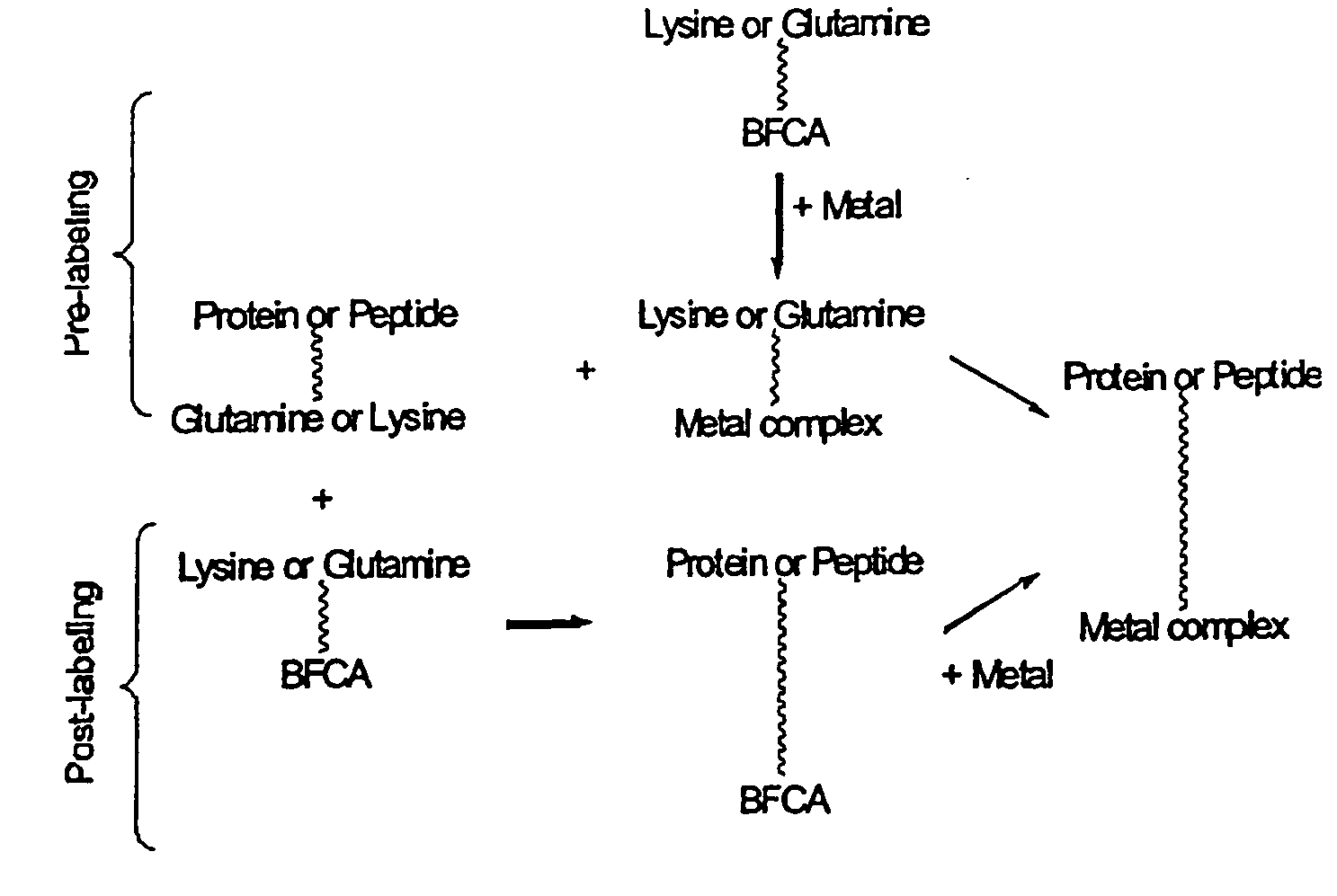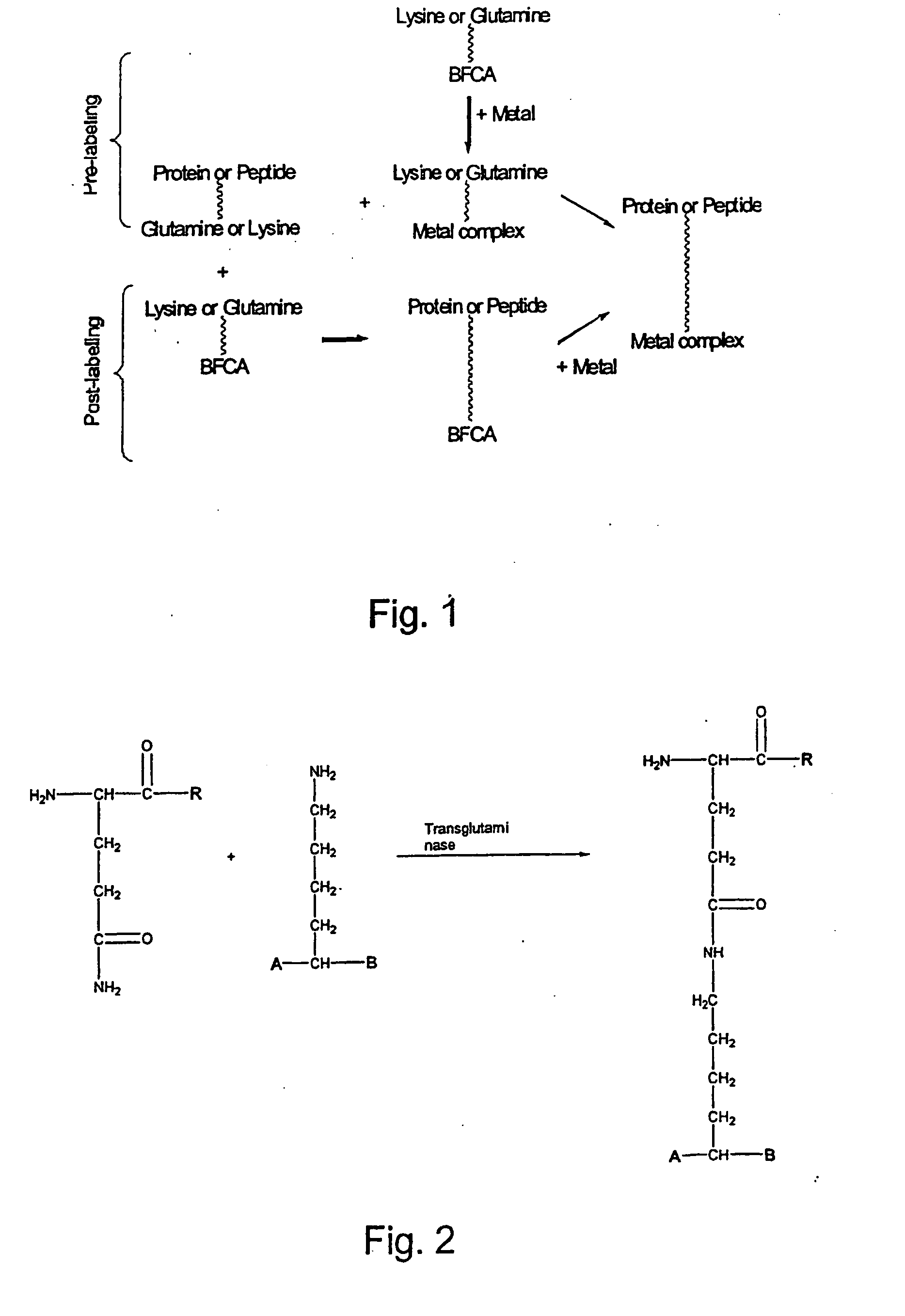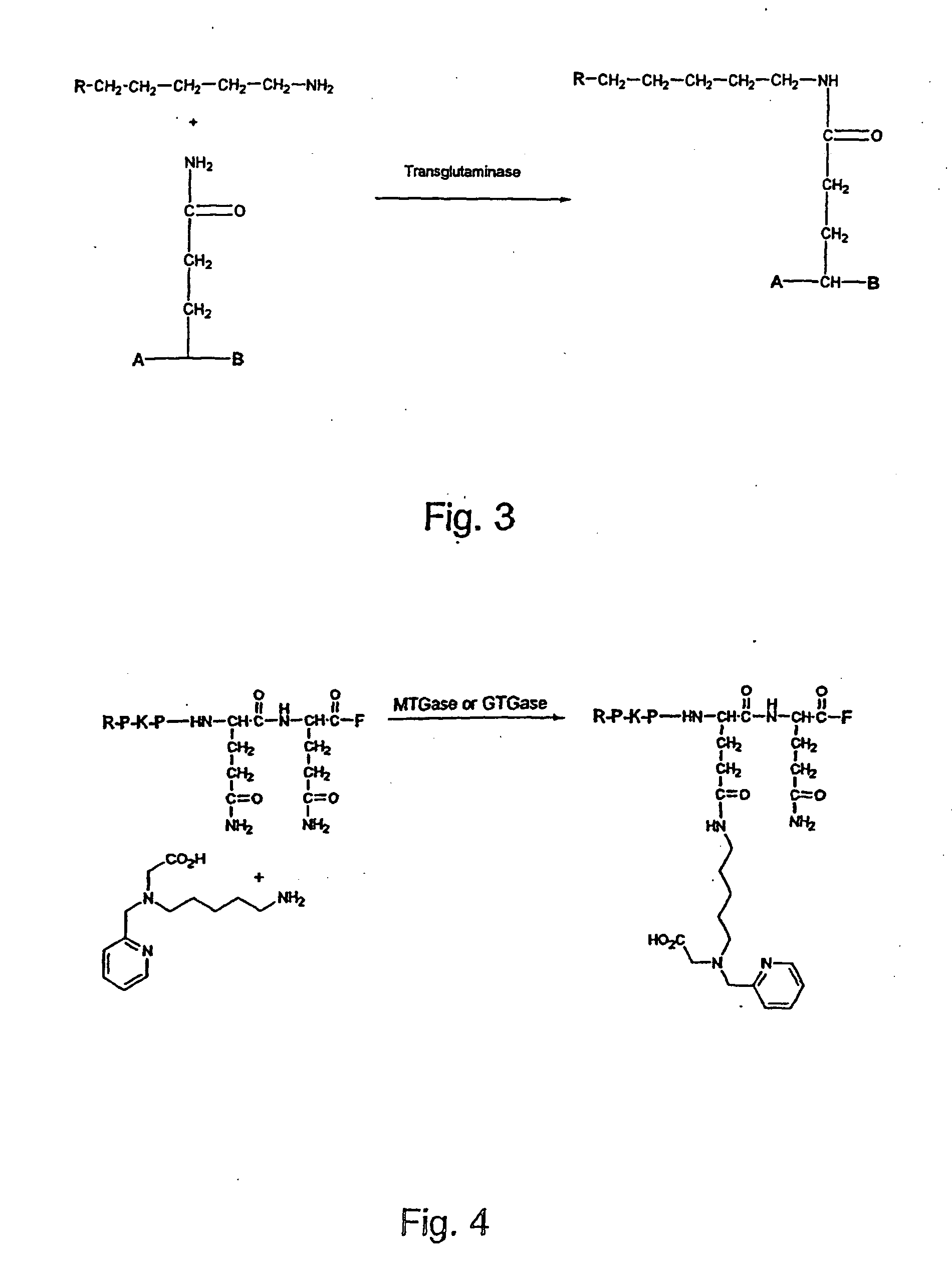Method for the linkage of bifunctional chelating agents and (radioactive) transition metal complexes to proteins and peptides
- Summary
- Abstract
- Description
- Claims
- Application Information
AI Technical Summary
Benefits of technology
Problems solved by technology
Method used
Image
Examples
example 1
Coupling the BFCA [(5-amino-pentyl)-pyridine-2-yl-methyl-amino ]-acetic acid (APPA) to the peptide Substance P(1-7) (amino acid sequence: RPKPQQF)
[0049] The enzymatic activity of GTGase and MTGase was used for coupling the BFCA [(5-amino-pentyl)-pyridine-2-yl-methyl-amino ]-acetic acid (also called herein APPA) to the peptide Substance P(1-7) (amino acid sequence: RPKPQQF) (FIG. 4). Substance P(1-7) was incubated with APPA at pH 6.0, 6.5, and 7 at 37° C. Ca2+dependent guinea pig liver transglutaminase (GTGase) or Ca2+, independent microbial transglutaminase (MTGase) were used. When MTGase was used, no CaCl2 was present in the reaction mixture.
[0050] The reactions were monitored by means of RP-HPLC. After 4 h the reactions were stopped and the product purified via HPLC. FIG. 5 presents a HPLC UV-chromatograms (λ=254 nm) of the GTGase mediated reactions. The UV trace shows the ligand 1 and Substance P(1-7) with retention time (Rt) of 15.2 min and 32.0 min respectively (FIG. 5A).
[00...
example 2
Coupling the radioactive transition metal complex [99Tc(Co)3(5-amino-pentyl)-pyridine-2-yl-methyl-amino]-acetate] to Substance P(1-7) (RPKPQQF)
[0054] The enzymatic activity of GTase and MTGase was used for coupling the radioactive transition metal complex [99Tc(CO)3(5-amino-pentyl)-pyridine-2-yl-methyl-amino]-acetate] to Substance P(1-7) (RPKPQQF) (FIG. 7). Substance P(1-7) was incubated with [99Tc(CO)3(5-amino-pentyl)-pyridine-2-yl-methyl-aminol-acetate at pH 6.0, 6.5, and 7 at 37° C. Ca2+dependent guinea pig liver transglutaminase (GTGase) or Ca2+independent microbial transglutaminase of MTGase were used. When MTGase was used, no CaCl2 was present in the reaction mixture.
[0055] The reactions were monitored by means of RP-HPLC. After 4 h the reactions were stopped and the product purified via HPLC.
[0056] The radioactive samples were collected and analyzed by scintillation counting. Compared to the control, where no MTGase was present, the incorporation of the 99Tc-complex was 10...
example 3
Coupling of the radioactive transition metal complex 99Tc(CO)3(5-amino-pentyl)-pyridine-2-yl-methyl-amino)-acetate ] to β-casein
[0057]β-casein was incubated with 99Tc(CO)3(5-amino-pentyl)-pyridine-2-yl-methyl-amino]-acetate] (FIG. 8) at pH 7, containing β-mercapto ethanol, EDTA, and CaCl2 (only for GTGase) and 1-50 mU GTGase or 50 mU MTGase. The reactions were stopped by addition of TFA.
[0058] The samples were applied on a fast desalting column for fractionized collection. Aliquots of the protein containing fractions were analyzed by scintillation counting. Compared to the control, where no MTGase was present, incorporation of the 99Tc-complex was 10 times higher with highest amount of enzyme after 24 h post incubation (FIG. 9A). For MTGase a similar labeling profile was observed and the maximum incorporation was found to be 7 times higher than in the control experiments 24 h post incorporation (FIG. 9B).
PUM
| Property | Measurement | Unit |
|---|---|---|
| Length | aaaaa | aaaaa |
| Paramagnetism | aaaaa | aaaaa |
Abstract
Description
Claims
Application Information
 Login to View More
Login to View More - R&D
- Intellectual Property
- Life Sciences
- Materials
- Tech Scout
- Unparalleled Data Quality
- Higher Quality Content
- 60% Fewer Hallucinations
Browse by: Latest US Patents, China's latest patents, Technical Efficacy Thesaurus, Application Domain, Technology Topic, Popular Technical Reports.
© 2025 PatSnap. All rights reserved.Legal|Privacy policy|Modern Slavery Act Transparency Statement|Sitemap|About US| Contact US: help@patsnap.com



